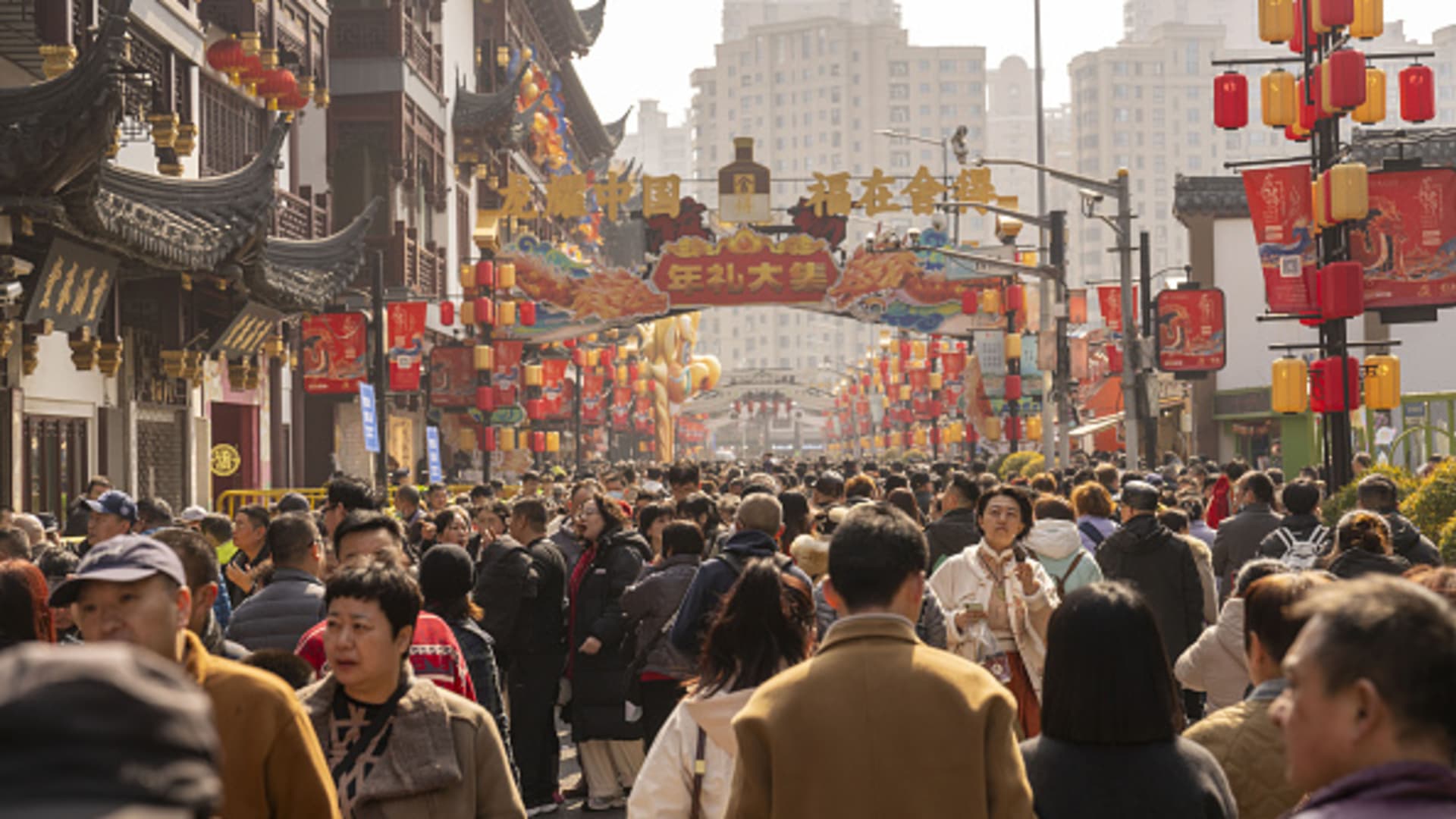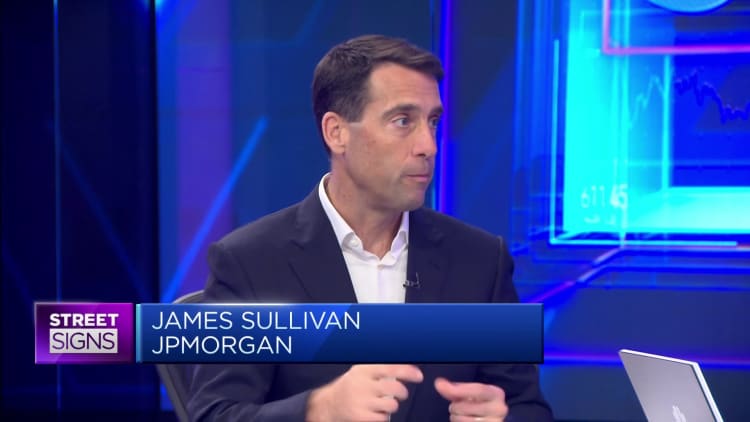China Lunar New Year travel spending surpasses pre-Covid levels — is consumption revival in sight?


Visitors near Yuyuan Bazaar in Shanghai, China, on Sunday, Feb. 11, 2024.
Raul Ariano | Bloomberg | Getty Images
China’s travel activity and spending jumped above pre-pandemic levels during the Lunar New year holiday, in a sign that consumption was improving in the world’s second-largest economy.
Some 474 million domestic trips were made during the eight-day festival, a 34.3% jump from a year earlier, according to data released by the country’s Ministry of Culture and Tourism on Sunday.
Tourists spent nearly 632.7 billion yuan ($87.95 billion) on domestic holiday trips, a 47.3% year-over-year jump, data showed.
State broadcaster China Central Television said citing the ministry that domestic trips represented a 19% rise over the same period in 2019 while spending rose 7.7%.
The strong data comes at a time when policymakers in China have been scrambling to boost domestic consumption as the country faces deflationary pressures.
The Chinese mainland saw 3.6 million tourist departures and 3.23 million tourist arrivals during the holidays, according to the ministry, as mutual visa-free travel with certain countries hastened the recovery in both outbound and inbound travel during the holidays.
The Lunar New Year is China’s most important holiday and is often seen as key metric for gauging consumer appetite in the country.
However, sustainability of the bump in travel remains uncertain as tourism revenue per trip still remained below the pre-pandemic level.
“Although we do see some strength in the data, we urge market participants to exercise caution,” analysts at Nomura wrote in a client note, highlighting that the figures reflected pent-up demand from consumers as this was the first new year holiday that was not impacted by the pandemic-related factors since 2019.
“When interpreting the remarkably high year-over-year growth rates, we need to take into account the very low base from last year during the height of the Covid ‘exit wave’,” Nomura said.
China stocks rose on Monday, led by the tourism sector, as they resumed trading after a week-long closure.
Market participants have also been eying any additional stimulus measures from Chinese policymakers that would support the economy and potentially boost spending this year.
The People’s Bank of China on Sunday held a key policy rate steady as expected, while investors reassessed when the U.S. Federal Reserve might start easing its monetary policy this year.
A delay in rate cuts could potentially limit Beijing’s room to navigate its own policy, as U.S. monetary easing bodes well for the yuan.
The deputy governor of the People’s Bank of China, Zhang Qingsong, said earlier this month that the country has also been encouraging banks and local businesses to accept foreign bank cards and was considering other steps to make mobile pay for international visitors even easier.
— CNBC’s Evelyn Cheng, Clement Tan contributed to this report









